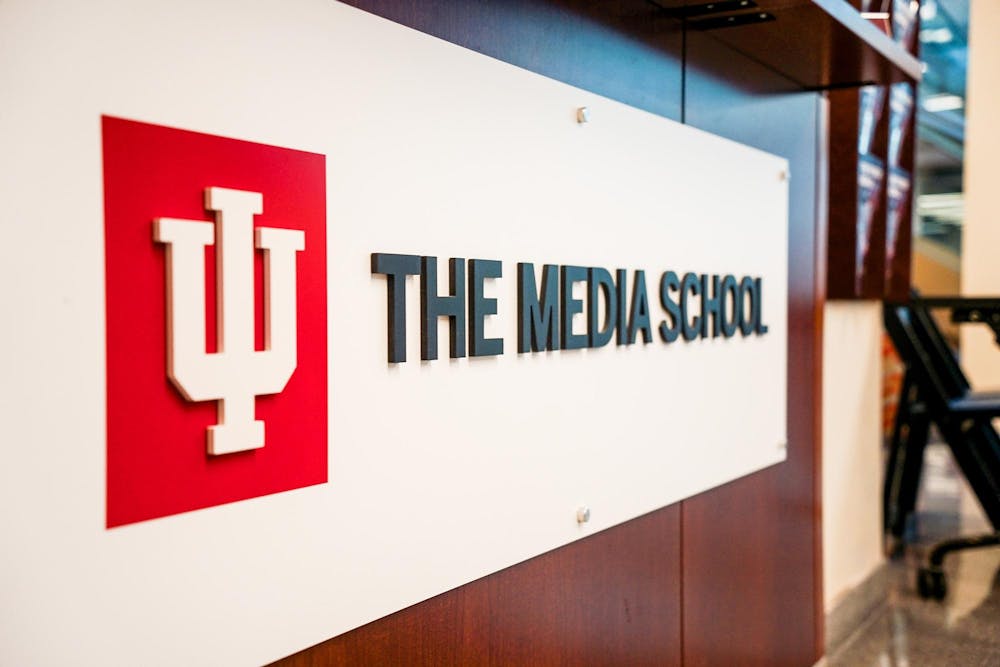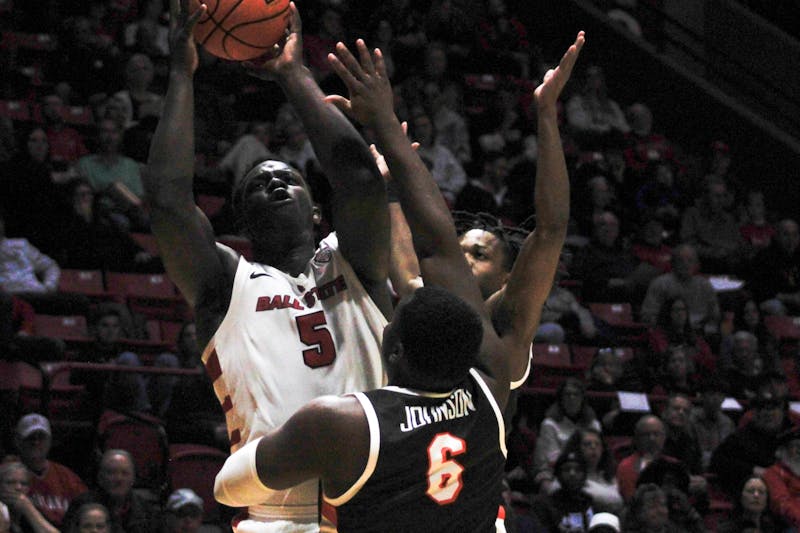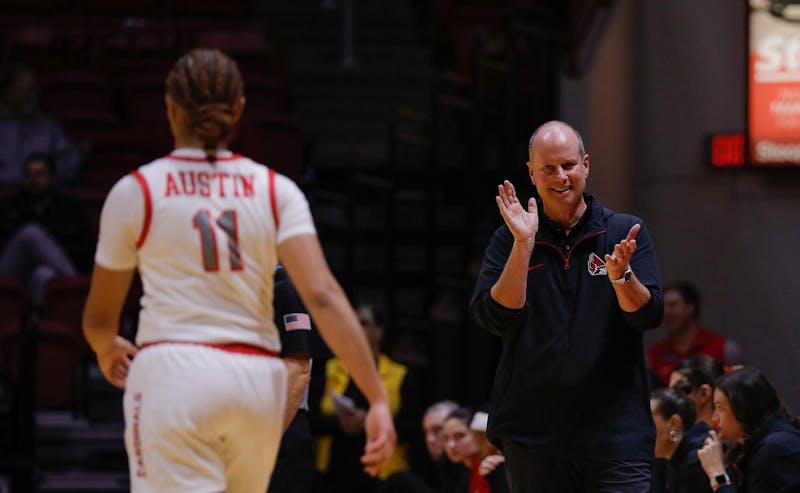Indiana University (IU) Bloomington’s student newspaper publication, the Indiana Daily Student (IDS), was founded in 1867 and has served the Bloomington campus and community during its 157 years of circulation. However, the IU Media School plans to eliminate the paper’s weekly print edition, effective this upcoming spring semester.
The school publicly announced the plan the afternoon of Oct. 8. IDS co-editor-in-chiefs Marissa Meador and Jacob Spudich received information on the print cut before IU’s formal press release through a leaked copy of the report presenting the plan.
After receiving the report in their inboxes, Meador and Spudich went to the Media School and asked for comment. Media School Dean David Tolchinsky sat down with the IDS, and his statement would be included in their news article breaking the convergence plan.
“Once they knew we were going to write a story on it, they decided to release the plan a day earlier [than anticipated and] before meeting with faculty,” Meador said.
IU’s plan will merge the university’s three flagship student media operations — the IDS, IU Student Television (IUSTV) and WIUX student radio — into a “multiplatform network,” according to the press release.
The IDS has undergone multiple reductions to its print production and editions since 2017. According to IU's Media School, the IDS has seen a decline in revenue for more than a decade, which is “consistent” with a broader national trend of local newsrooms facing economic challenges. To combat this, the Office of the Provost provided about $1 million in support in July, clearing the IDS’s debt and allowing for the publication to “restructure on solid financial footing.”
Tolchinsky wrote a letter to the editor Oct. 21, in which he said that “subsidizing a business model on campus that does not reflect the ecosystem off campus won’t adequately prepare students for the career landscape they’re entering.” Spudich and Meador wrote a response to Tolchinsky’s letter on behalf of the IDS staff the same day.
This isn’t the first time a student-run newspaper has faced print cuts by university administrators. In February 2022, the president of Texas A&M announced The Battalion, the university's student newspaper, would stop its printing operations, according to The Battalion’s breaking news coverage of the announcement.
Similar to the IDS’ situation, those at The Battalion weren’t informed of the decision beforehand. However, Friends of The Battalion, a non-profit formed to promote and sustain the paper, helped the media publication transition to a student organization. The non-profit also helped the newspaper remain independent and improve staff pay.
Spudich said the IDS article breaking the news — and their letter from the editors the same week — led to “overflowing support” from alumni and community members.
“The importance of the paper is not just something thought of in the newsroom,” Spudich said. “In our entire community, and wherever our alumni are, [everyone] understands the importance of it.”
Newspaper printing and subscription bases have been on the decline since the mid-2000s. In 2022 alone, according to the Pew Research Center, an estimated total for print and digital daily newspaper circulation in America was 20.9 million, nearly 8 to 10 percent lower than reported the year prior.

Indiana is home to 40 counties with a single newspaper in circulation. One county is entirely without, according to data from “The Expanding News Desert,” an ongoing report by the Hussman School of Journalism and Media.
More than half of all counties in the U.S. have no local news source or only one news outlet left, according to a 2023 report from the Medill School of Journalism. The report, however, underlines that through broadened off-campus and community coverage, student journalism is attempting to bridge the gap seen within news deserts.
Jackie Alexander, president of the College Media Association, said student papers are “filling a void” and informing people in the communities that “need it most.” Alexander also said student media should be led by students, who should be involved in all decision-making. In her opinion, faculty and administrators should be providing advice while navigating around student decisions.
“It doesn’t seem [that method] is what happened with the IDS,” Alexander said. “… I’ve met with multiple folks who are interested in reinvesting in student-led media that is actually focused on communities or in news deserts … We know that a lot of our student media outlets are filling these news deserts. They’re taking up issues that affect so many more than the folks that are directly on campus.”
While Alexander acknowledges that print sometimes “needs to be removed,” she said it is up to universities to “review with good faith” how print media is performing while making these decisions. She voiced that universities must help create an “appropriate plan and ecosystem where student media can thrive.”
Meador said the IDS staffers felt their voices weren’t included and that IU’s decision was being “forced upon them.” The IDS design team was particularly affected by the decision.
“They design the paper every week,” Meador said. “And after this decision, they [won’t] have the ability to create the print product for every week anymore … I personally anticipate a huge loss of our design staff.”
Meador said since the IDS will no longer have a print publication, she recommends that student journalists, particularly those involved in the design process, take internships or other opportunities that allow them to work in weekly print, even if that means the IDS would lose them.
IUSTV news director, Ashton Hackman, said he and other student media leaders have been aware of the plan since the spring of 2024. While Hackman said he wasn’t a part of the preliminary meetings — which included the previous executive director of IUSTV, IU Media School faculty and administration, and other student media heads — he knew “this was coming.”
“I wasn’t really expecting it to be done this school year, so that was the surprise,” Hackman said. “But we did know that this kind of plan was likely coming down the pipe and something that we were prepared for.”
While the announcement’s timing was unexpected, Hackman said he’s been a “big believer in this plan” since the idea came about at the end of last semester.
“I think [the plan has] been long overdue,” Hackman said. “Media’s changing. The way people get their content is changing … We should look at where people consume content, where people make content and kind of steer our organizations — or all three of our organizations — onto a path where students have the ability to understand where the direction of media is going.”
Hackman said there were better ways to support student media than cutting print. He felt there were other ways to ensure the IDS didn’t experience another deficit.
As one of the student leaders for IUSTV, Hackman said the organization stays “afloat” by not spending more money than it has. Beyond extra support from student media revenue — such as dues or the Media School “stepping in” to help with expenses — Hackman recommends IU’s student media organizations make other financial cuts.
“What the [IDS doesn’t] disclose in that article is the reason that they can still have a profit yet run a deficit … They’re paying for staff pay, they’re helping pay for pro[fessional] staff and the overall expenses for having the organization,” Hackman said. “So, yes, their paper does make money, but they need to consider everything.”
Hackman said that he was glad the university had “step[ped] in” and cleared the IDS’ debt this past summer. The IDS’ future was “put at risk” before the debt was forgiven, Hackman said. He believes the convergence plan will help avoid a similar debt accumulation.
All three student media organizations will retain their independent brands, but business operations will be streamlined to increase efficiency and boost revenue through ad sales on all three platforms. While the IDS is still in print, Meador said she will keep “hammering home” the importance of a print medium.
“People might feel like we’re gone or that our impact is diminished,” Meador said. “Cutting print will have a negative impact … It will lose up to $58,000 in revenue per year. We don’t see that as a positive thing … There are things that a physical medium communicates that digital can’t. There’s something to be said about holding a physical thing in your hand.”
As the end of the fall semester approaches, Spudich said he hopes people will continue to speak up on print retention for the IDS, as well as consider donating to their fundraising efforts. But with the current plan still in effect, he said the staff will “just keep the motor going.”
“[We’ve] dealt with the burden of, like, ‘Oh, these papers, we only have a couple of them left,’” Spudich said. “If print cuts actually come into effect in the spring, it’s just important other people come forward … Our newsroom is incredibly resilient. They’ve continued to provide information to our community day in and day out. This paper is a product of teamwork.”
Contact Kate Farr via email at kate.farr@bsu.edu.





The Daily News welcomes thoughtful discussion on all of our stories, but please keep comments civil and on-topic. Read our full guidelines here.